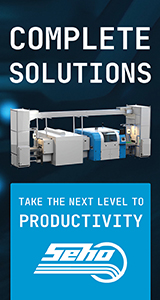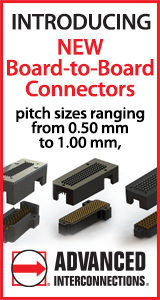|

|
|
| Ask the Experts | |||||||
|
|||||||
|
October 7, 2020 - Updated July 5, 2007 - Originally Posted Separate wash systems for leaded and non-lead boards?We have a aqueous non saponifier wash system. Do we need separate wash systems for leaded boards and non-lead boards? E.D. |
|||||||
| Expert Panel Responses | |||||||
|
As with so many answers, yes and no. From a strictly wash standpoint, there is no need to segregate lead from no-lead in the cleaning system. Although the cleaning profile for lead-free is generally more aggressive than leaded solder paste, the cleaning equipment and chemical do not know the difference. There is little chance of "transferring" lead from an assembly reflowed with leaded solder paste to another assembly reflowed with lead-free solder paste. Although minute traces of lead may be found in the wash solution (particularly with high pH saponifiers), the rinse process prevents any dissolved lead from hitchhiking its way onto the assembly. One should ensure that their cleaning equipment incorporates an aggressive rinse process to ensure the thorough removal of wash chemical (especially if it contains dissolved lead). From a practical standpoint, not all cleaning systems are capable of removing lead-free solder paste residue. The reflow and soldering profiles for lead-free solder are generally more aggressive (hotter) than leaded solder. It doesn't matter if you are cleaning pizza pans or SMT assemblies, heat is always the enemy of cleaning. The removal of lead-free solder paste requires more aggressive wash chemistry and more aggressive mechanical energy (impact pressure, temperature, spray diffusion patterns etc). Additionally, you will need a cleaning system that filters the wash solution (in real time) to prevent the transfer of particulate matter (solder balls) onto subsequently washed assemblies. For example, if your cleaning system is not equipped with a wash solution filtration system callable of removing solder balls and other particulate matter from the wash solution "stream", it is possible to transfer particulate lead matter onto a lead-free assembly. A good "real-time" 10 - 25 micron bag filter in the wash solution stream will prevent cross particulate contamination. The real answer to your question depends on the power and performance of your cleaning equipment and your chemical choice. From an effluent standpoint however, that's a different story. A cleaning application using any high pH wash chemistry has the potential to leach lead from the assembly. Additionally, any solder balls removed in the cleaning process contain lead (assuming the use of a leaded solder paste). The direct-to-sewer discharge of wash solution used to remove leaded solder paste residues should be avoided. When cleaning leaded solder paste residues, one should utilize a cleaning system that is equipped with wash solution filtration and recycling technology to prevent lead discharge in both dissolved and particulate forms.
President Aqueous Technologies Mr. Konrad has been in the electronic assembly equipment industry since 1985. He is founder and CEO of Aqueous Technologies Corporation, a manufacturer of automatic de-fluxing equipment, chemicals, and cleanliness testing systems.
Short answer, generally no you do not need separate systems ~ with the caveat that your system maintenance and operations are up to snuff. Your web page shows two in-line cleaning systems that from your question I assume are designed to run water only. As you are well aware, tin/lead solder materials are cleaned very effectively, in most cases, by water alone. The real issue comes down to certification requirements for your customers. Does your system filtration assure you that no tin/lead solder balls (on the off chance your process has some from time to time) are removed and not re-deposed on your lead free assemblies? RoHS compliance does mean truly lead free, and your ability to certify that compliance is the key to your decision. There is a bigger question. That is whether your organic acid lead free materials can be cleaned by water alone? Our laboratory and field experience is that far less than 100% of the lead free "O/A" materials can be cleaned by water alone, particularly when employed in dense designs or advanced packaging applications. If the answer is no, then segregating the technologies to minimize chemistry utilization may be advisable. Also, the old fashion "saponifiers" are very good at cleaning old fashion soils, like those good old RMAs we all used 10 years ago. Asking a 10 year old product to clean newly introduced solder technology is like buying a lottery ticket; how lucky to you feel today? Fortunately, the industry has not left you to the long odds of the lottery. Modern materials have been developed which are quite effective, and lab data is available for your use in evaluating these technologies. Many water only cleaning systems can be adjusted or retrofitted to economically run with chemistry. Leading cleaning agent suppliers have the ability to make recommendations, and in our case implement them. In summary, one machine should be fine, but do check these new lead free "water soluble" materials to make sure water alone will remove the residues you need removed.
Vice President Kyzen Corporation Mr. Forsythe is a recognized expert in cleaning chemistries and processes. Tom has a Bachelor's in Applied Mathematics & Engineering from the US Naval Academy. He is well published in both the industry trade magazines. Tom has spent the last 14 years with Kyzen Corporation.
Speedline Technologies and Zestron are currently doing experiments on this topic and will have a paper with the results of the experimentation presented at this years SMTAI Show in Chicago.
Principal Consultant ITM Consulting Mr. Belmonte has been a process engineer and process engineering manager in the electronic manufacturing industry for over 25 years, with experience in all aspects of electronic product assembly operations. He is well-known throughout Asia and SE Asia for both his process work and teaching engagements.
As I understand the rules, no, you do not need a separate cleaning system for your leaded and non-leaded boards. The reason for this apparent discontinuity in the rules stems from the fact that your machine is a cleaner, preumably with filtration and solvent recycling systems of some sort, and so leaded residues never come in contact with finished no-lead boards. Compare this situation to the most common example, the wave solder machine, which actually melts the solder, holds it, and then deposits the solder on to the board. There's no way to completely remove the lead 100% from the wave solder pot before adding the no-lead solder, so complete separation of the systems are required to achieve true "lead-free" status. Your cleaning system, in contrast, is designed to NOT deposit anything on the board, and is designed specifically to remove any residues. So, no lead will be redeposited on the board from boards cleaned earlier in the day. The only exception to this rule that I can imagine is someone using the most simple, single-sump dip tank. In that instance, where the solvent is not filtered or recycled, re-deposition is entirely likely and I think separate systems would be required.
Vice President Micro Care Mr. Jones is an electronics cleaning and stencil printing specialist. Averaging over one hundred days a year on the road, Mike visits SMT production sites and circuit board repair facilities in every corner of the globe, helping engineers and technicians work through the complex trade-offs today's demanding electronics require.
|
|||||||
| Submit A Comment | |||||||
|
Comments are reviewed prior to posting. You must include your full name to have your comments posted. We will not post your email address. |
|
Free Newsletter Subscription
Circuitnet is built for professionals who bear the responsibility of looking ahead, imagining the future, and preparing for it. Insert Your Email Address |
|

|






